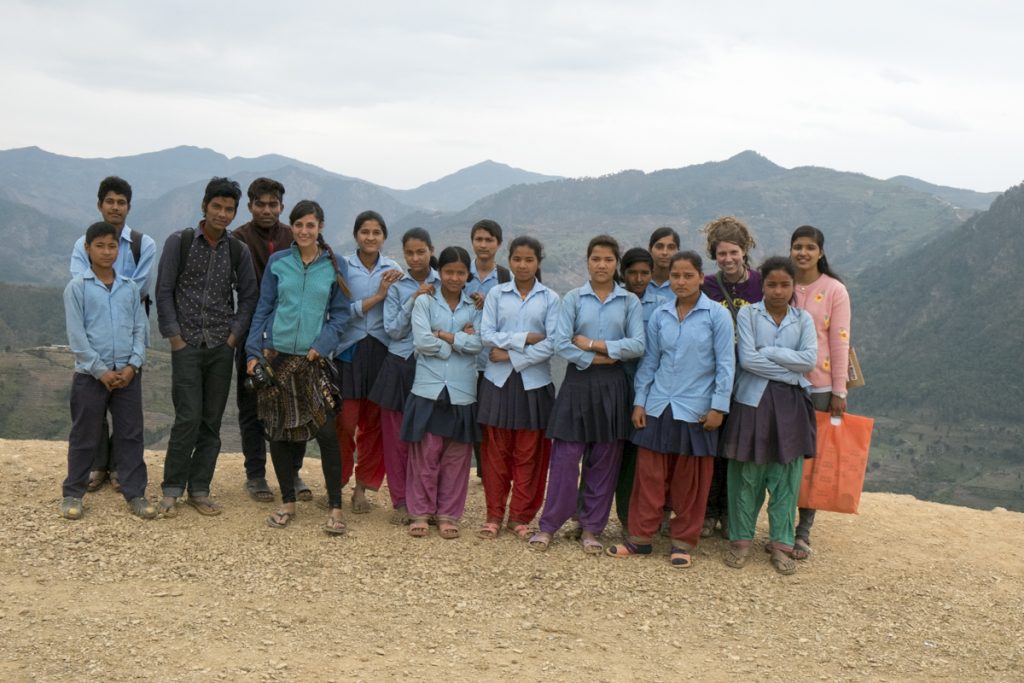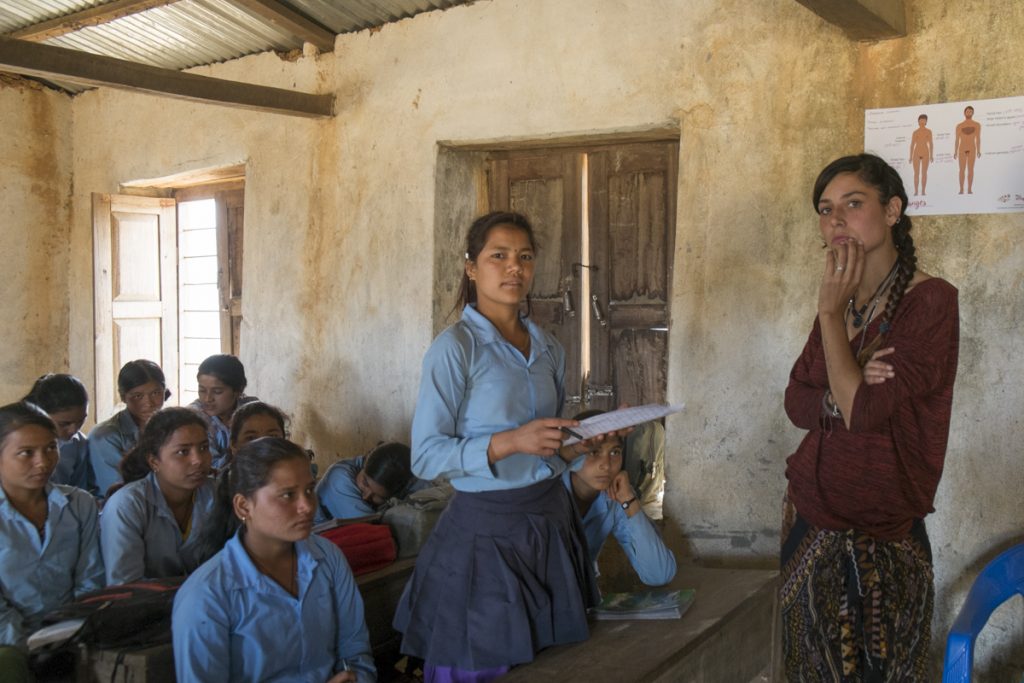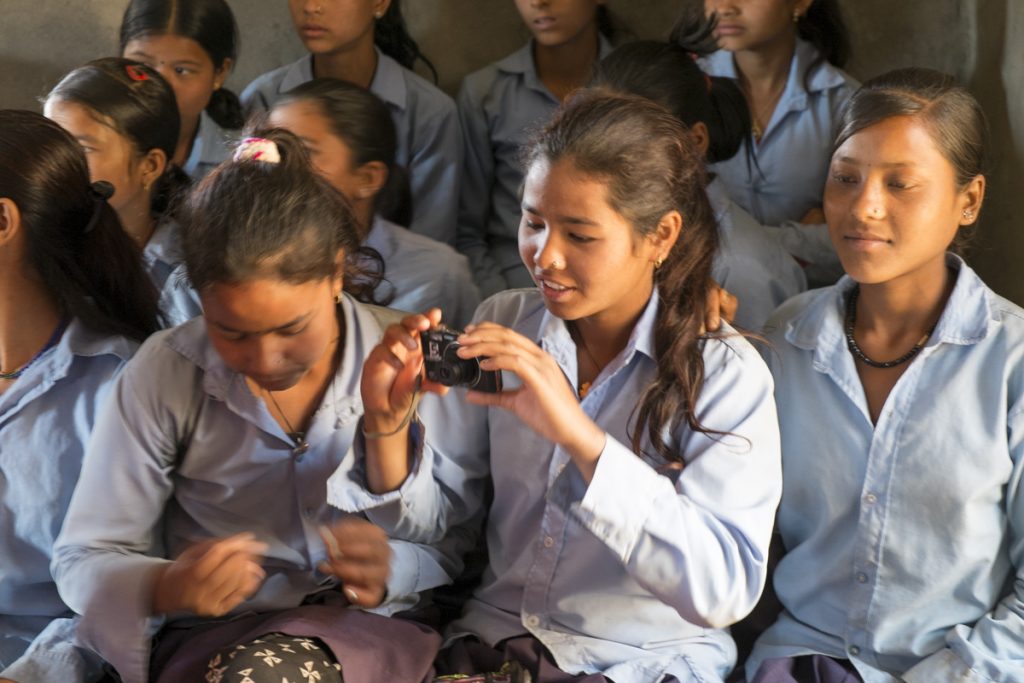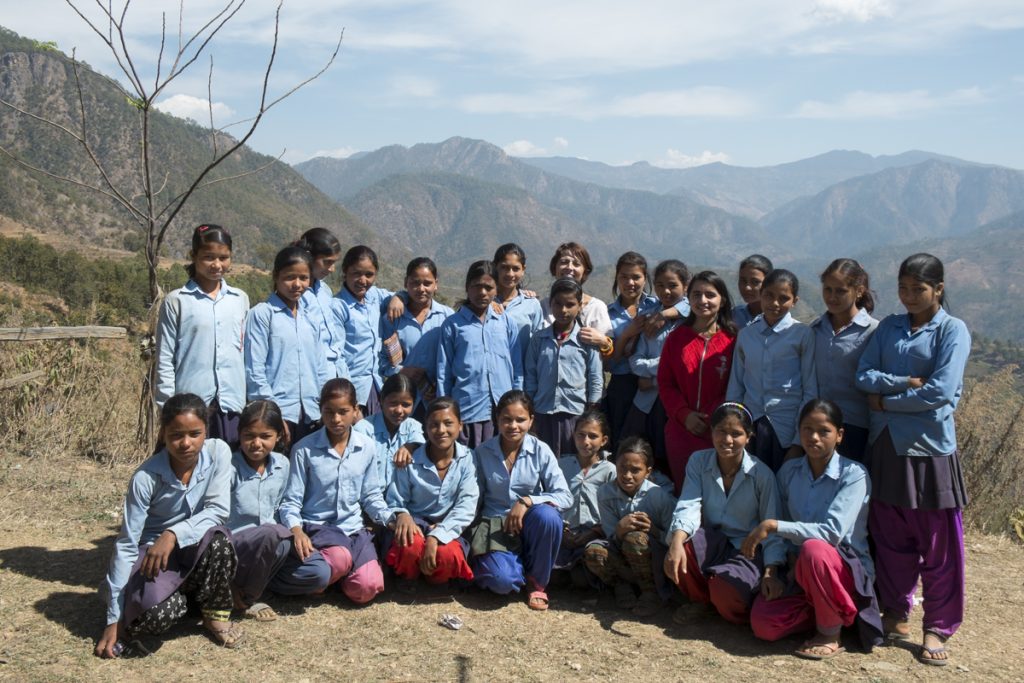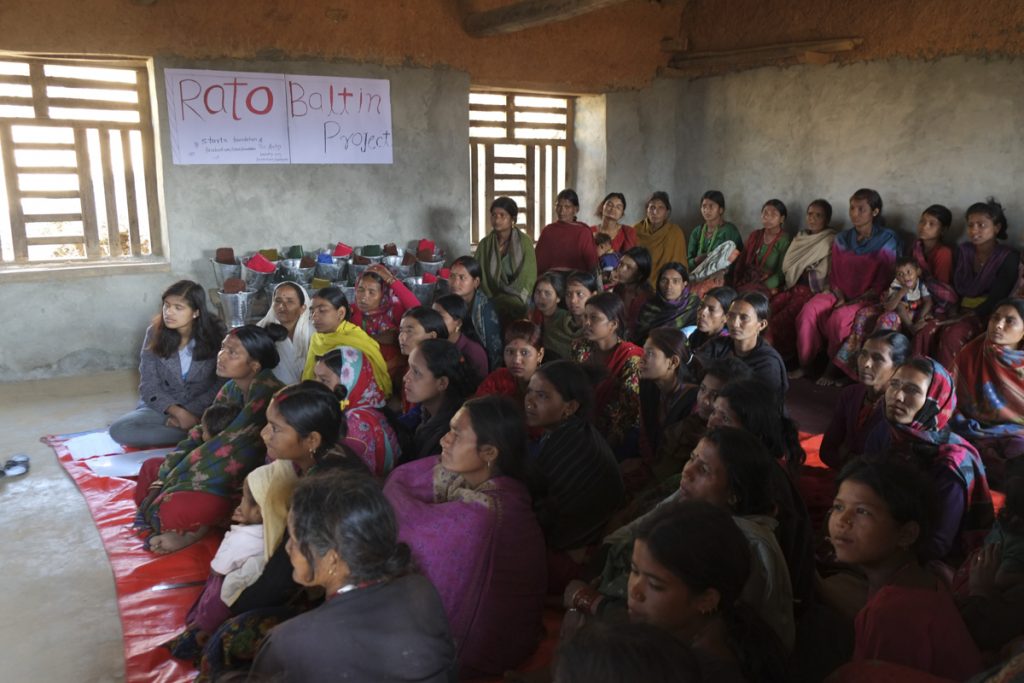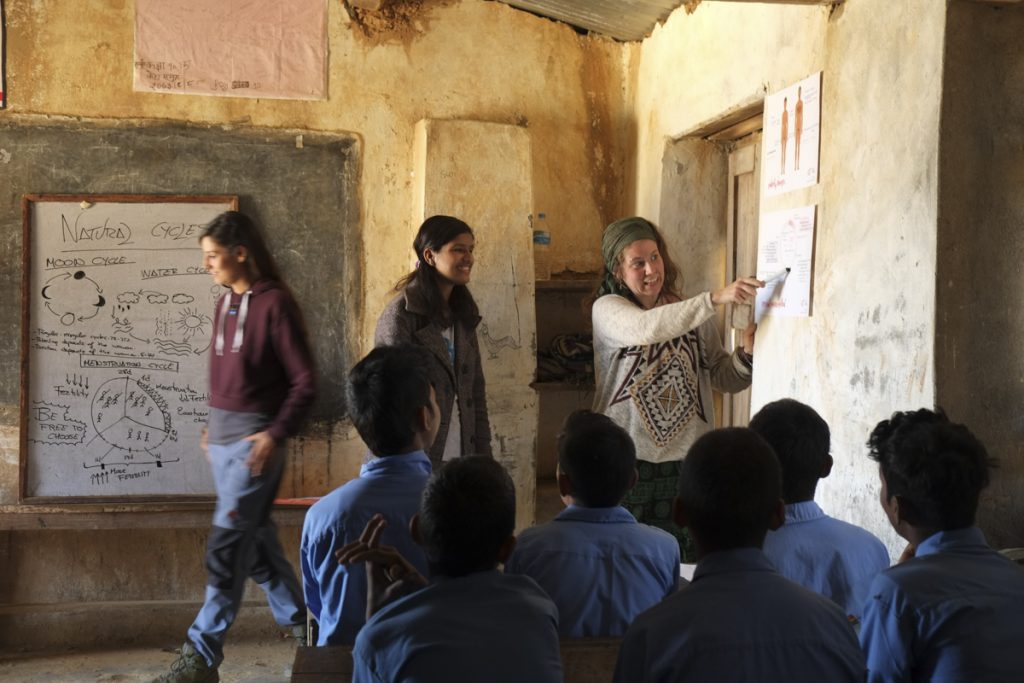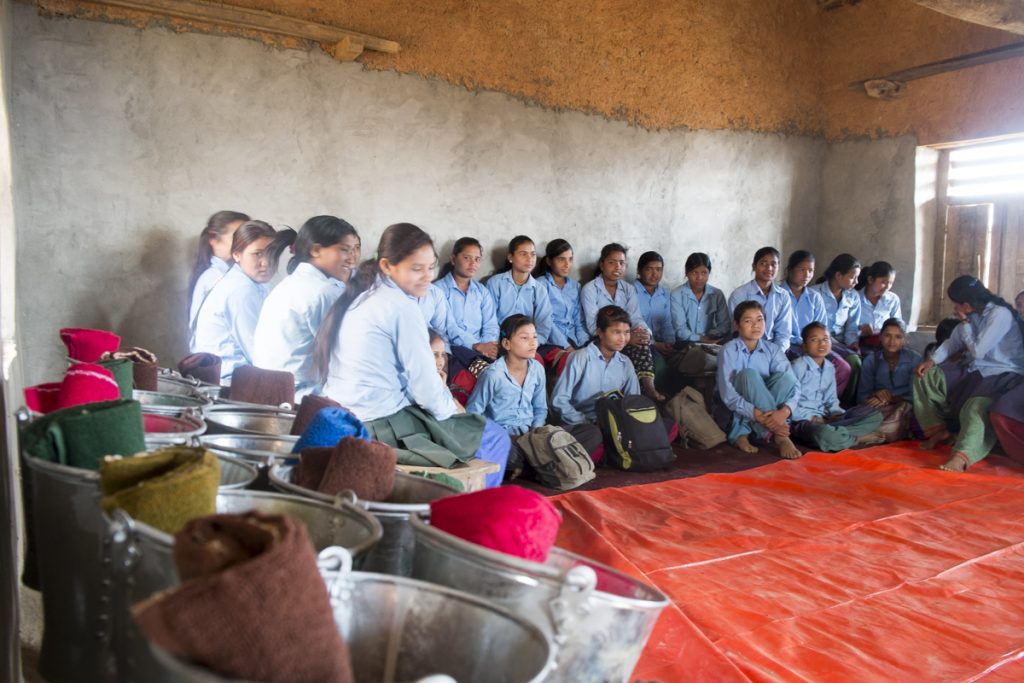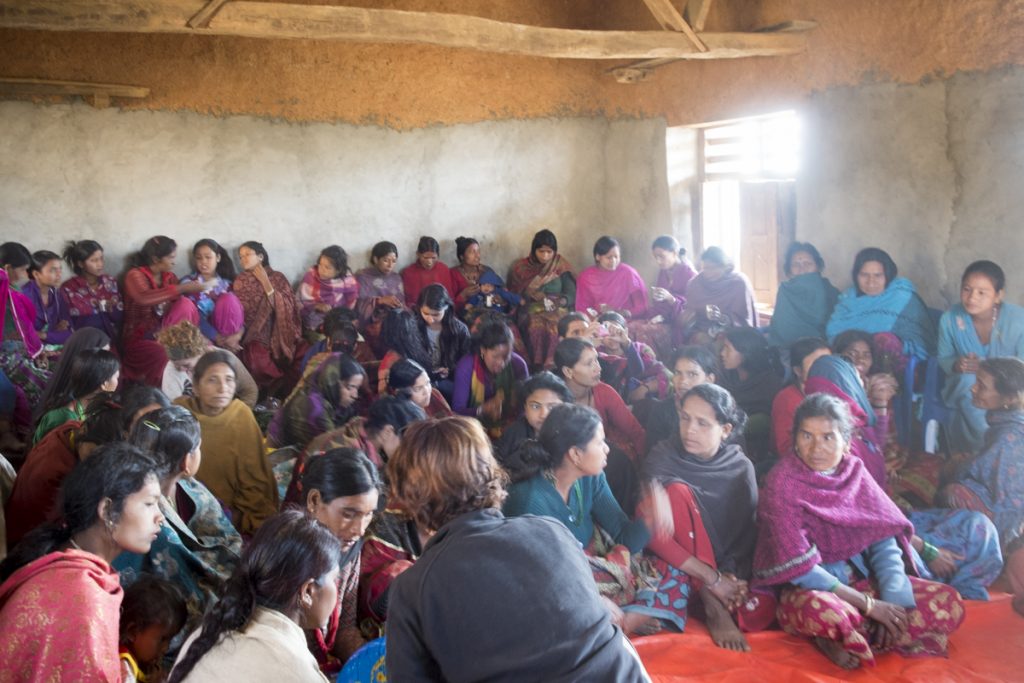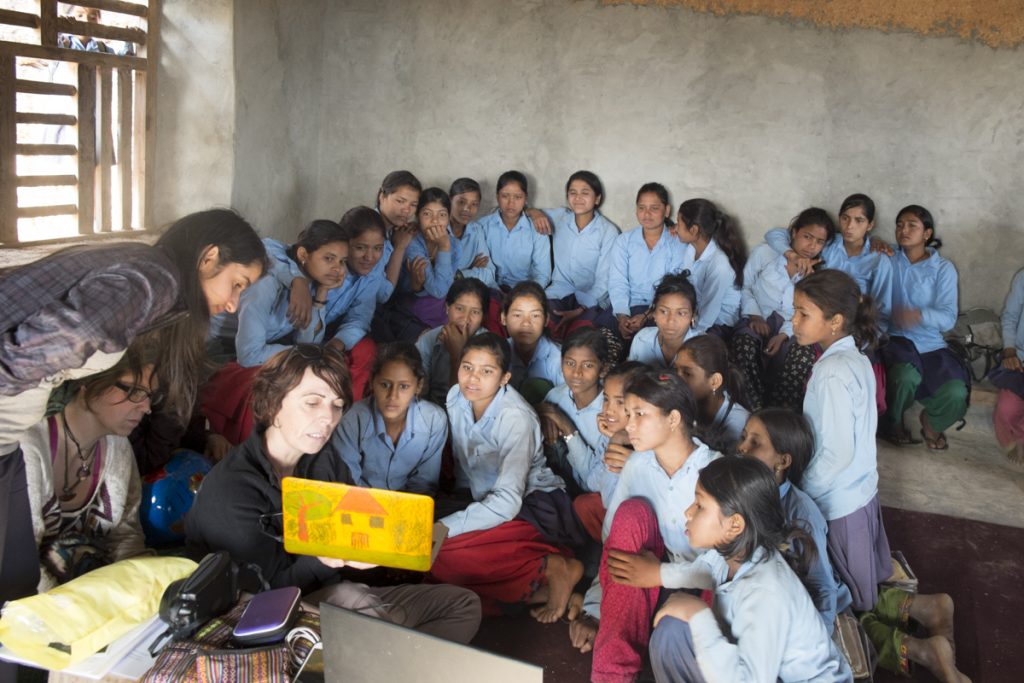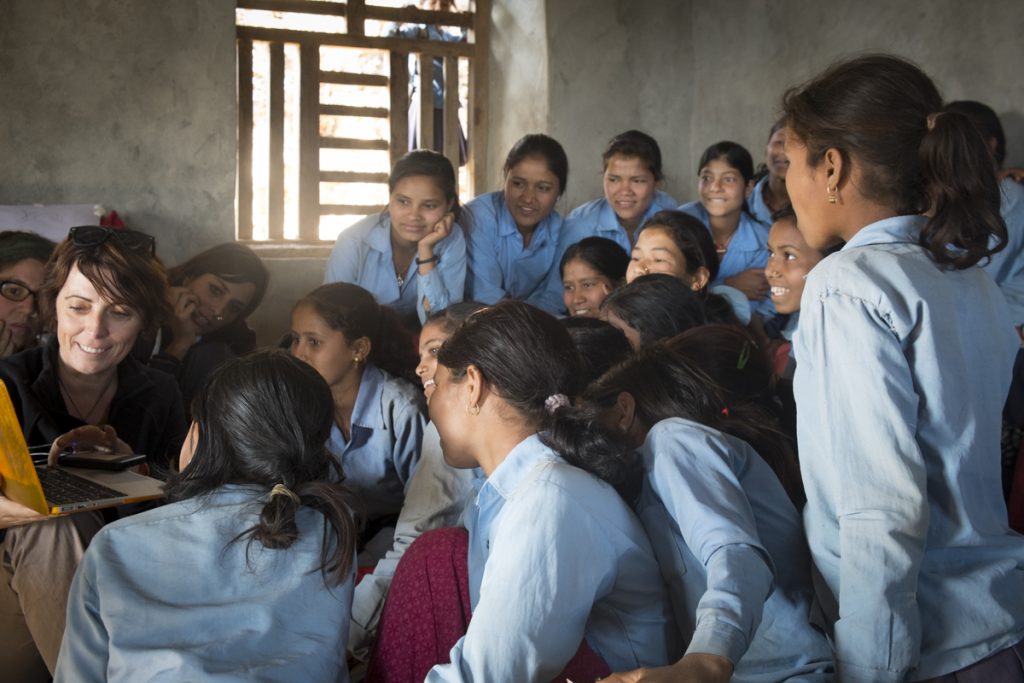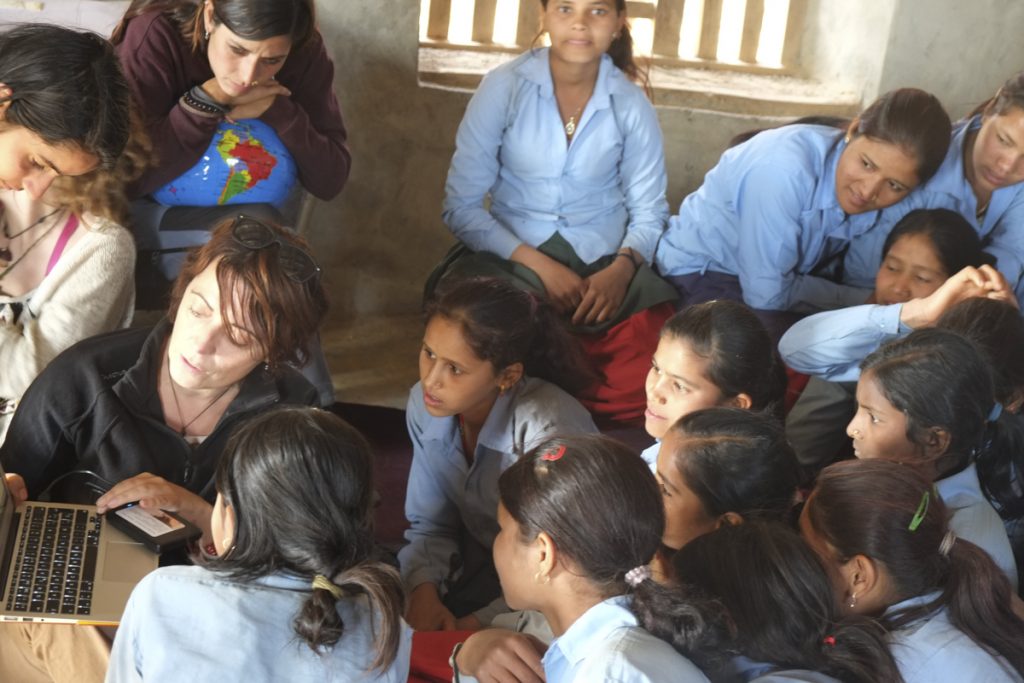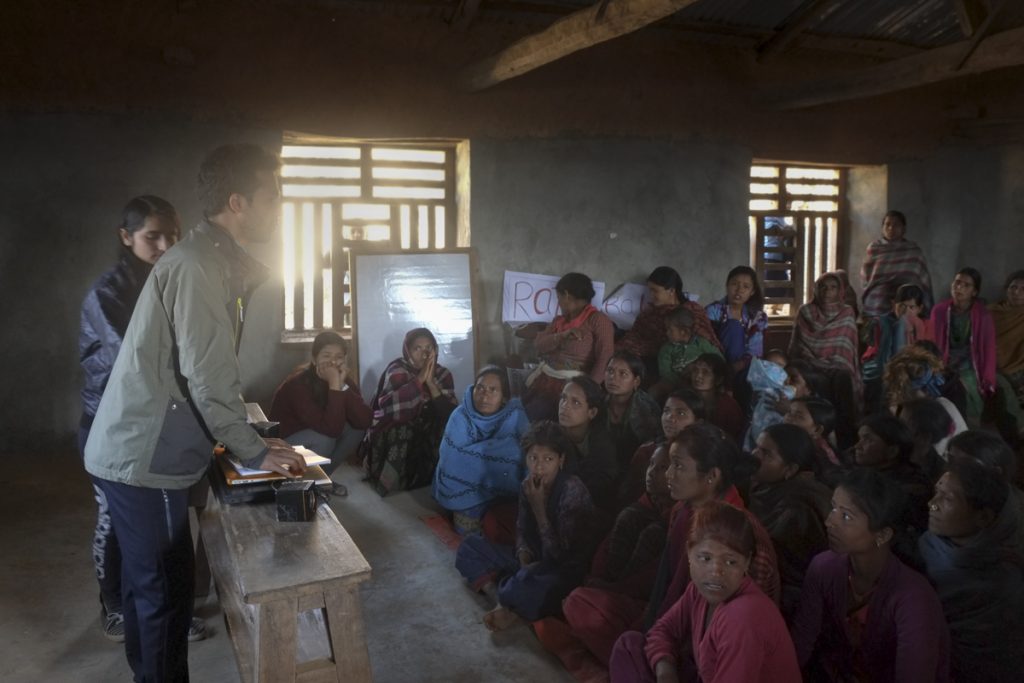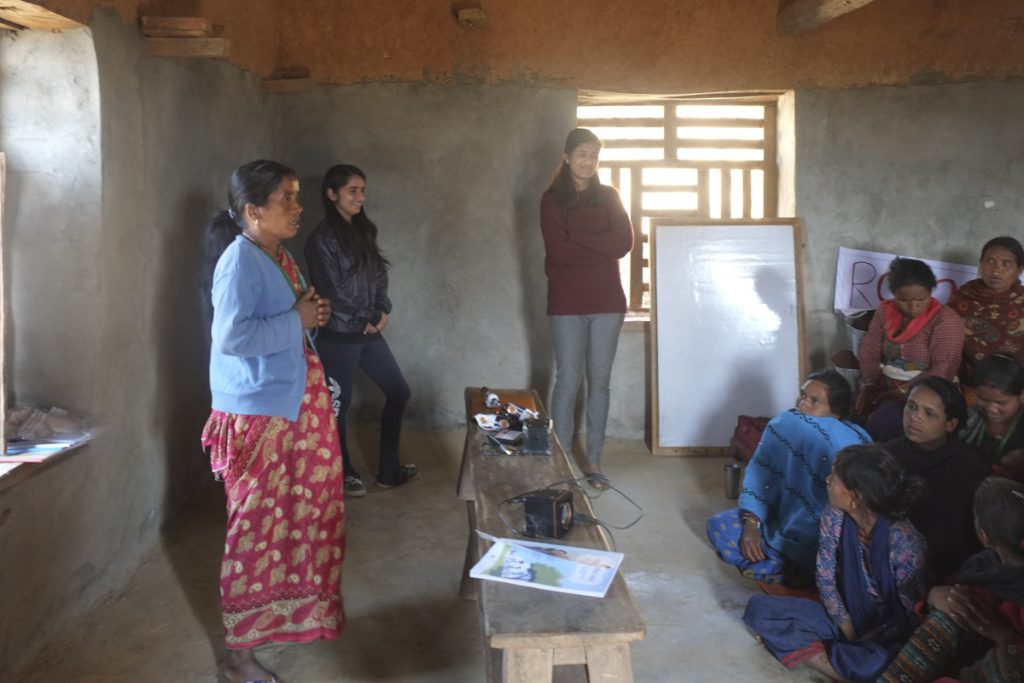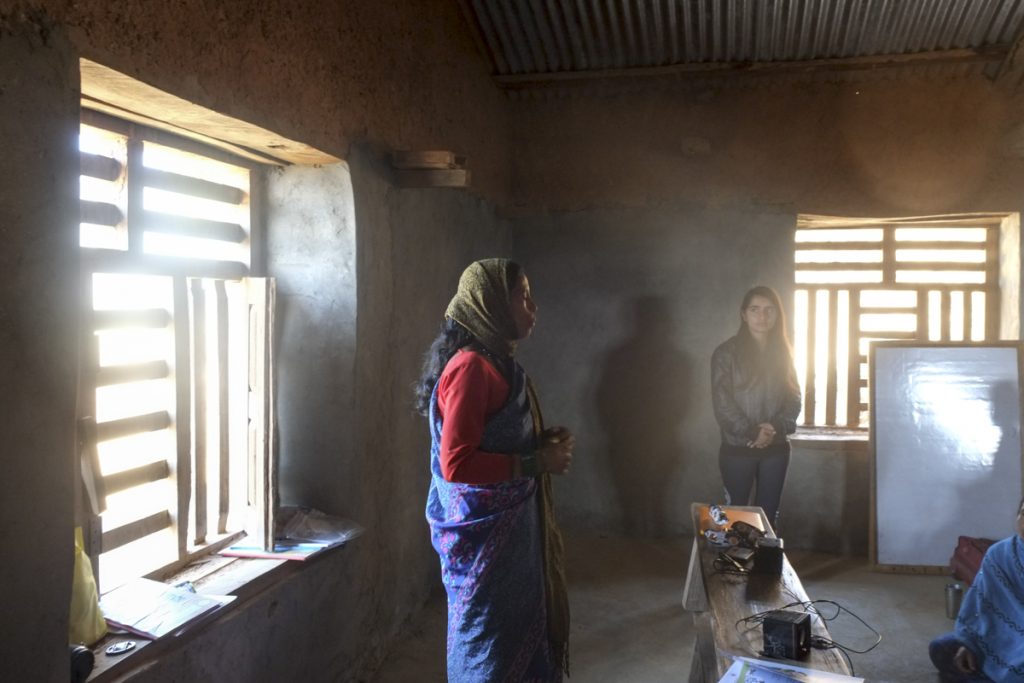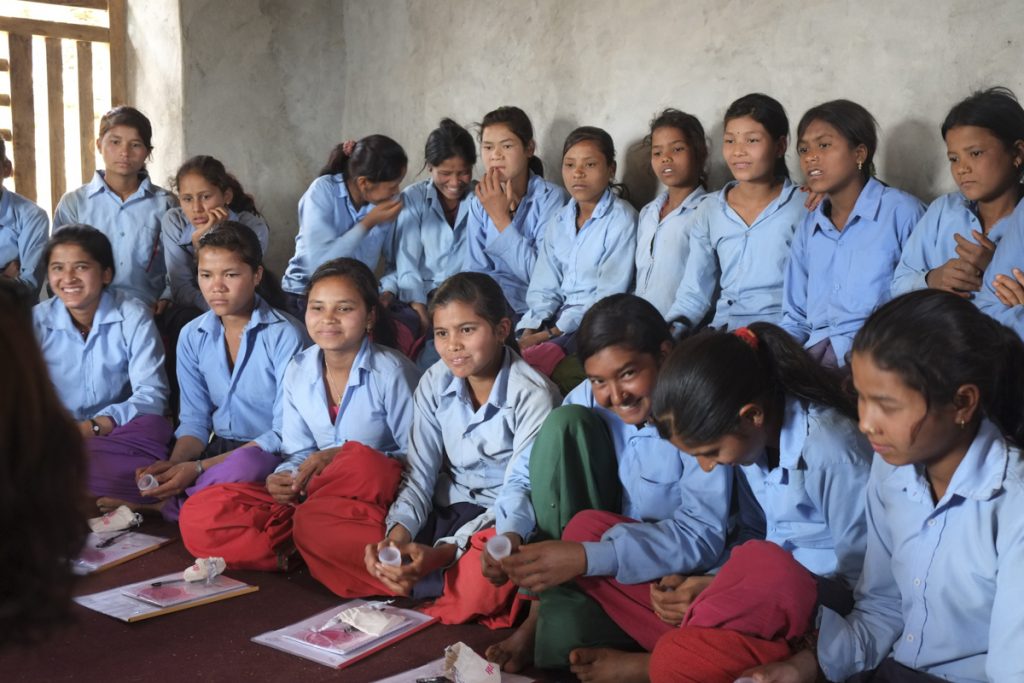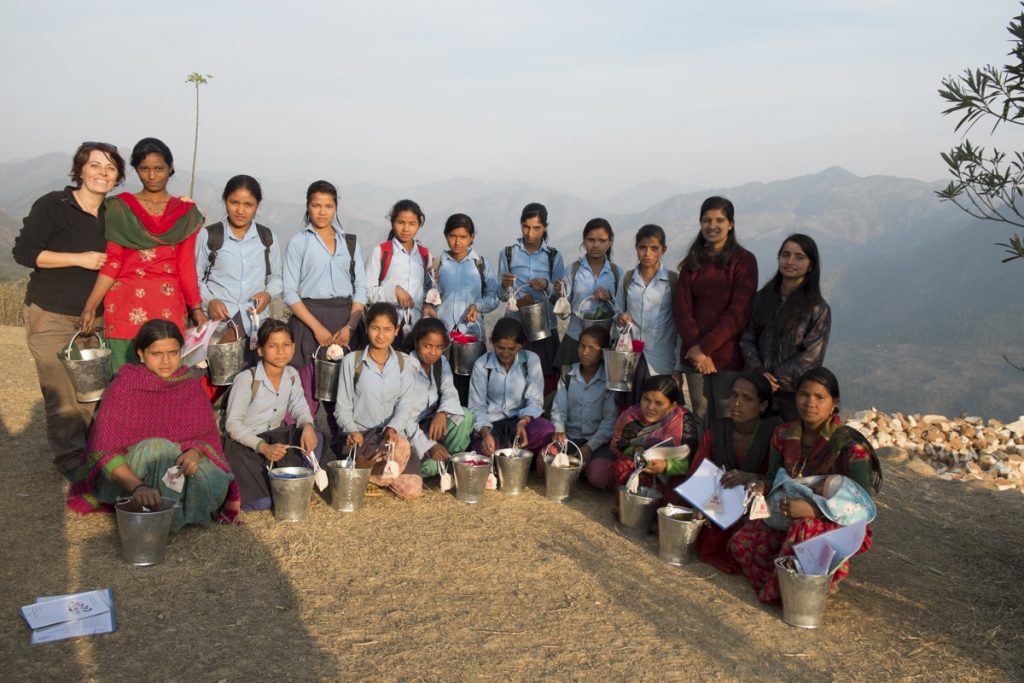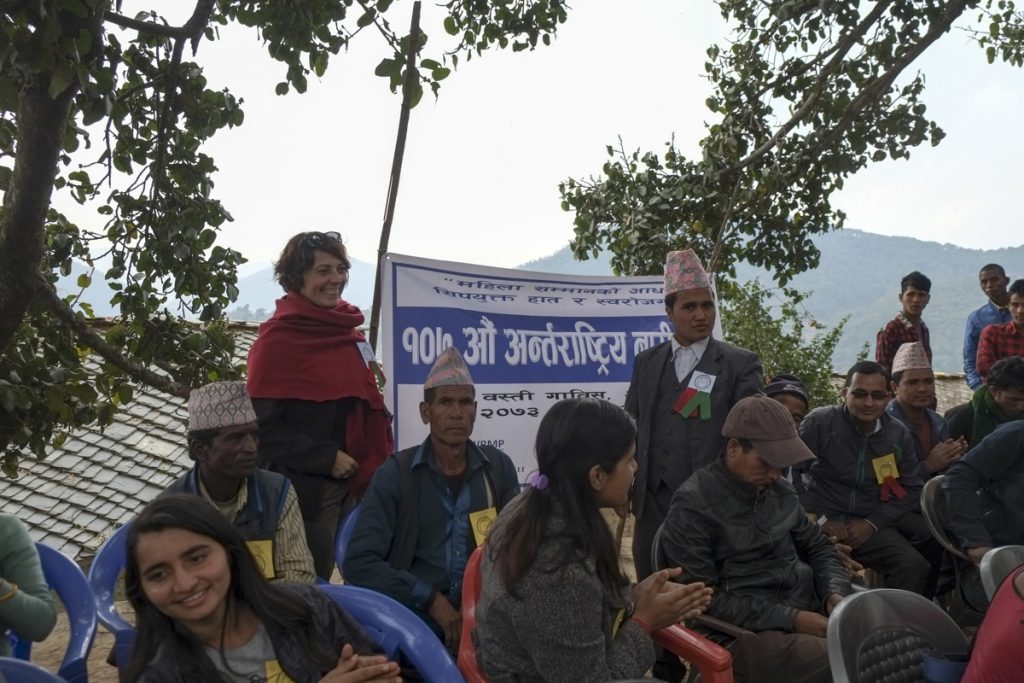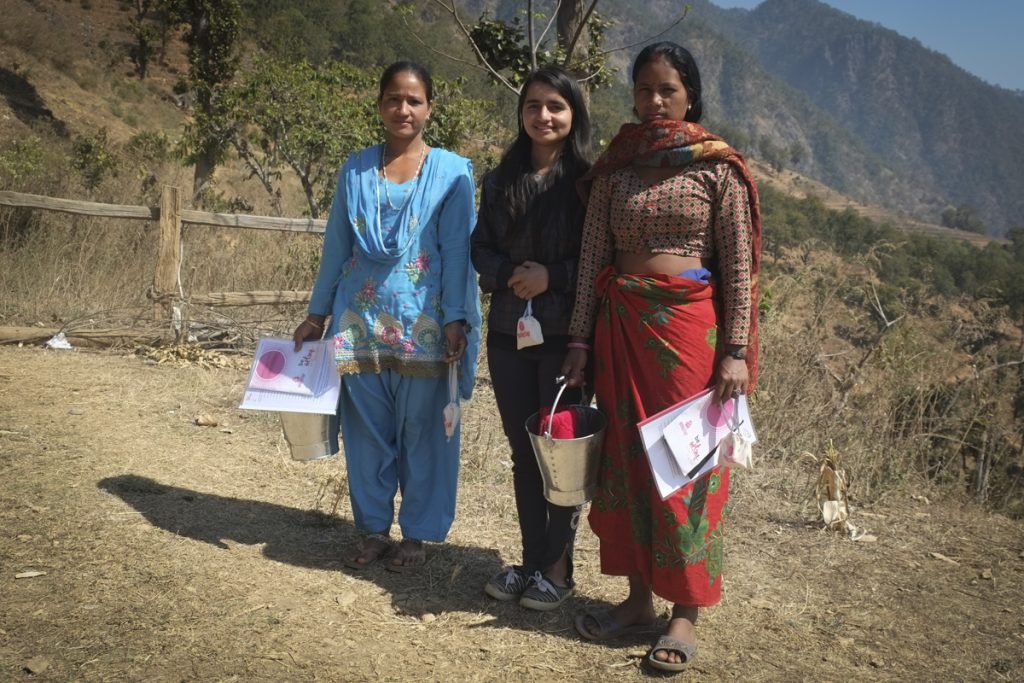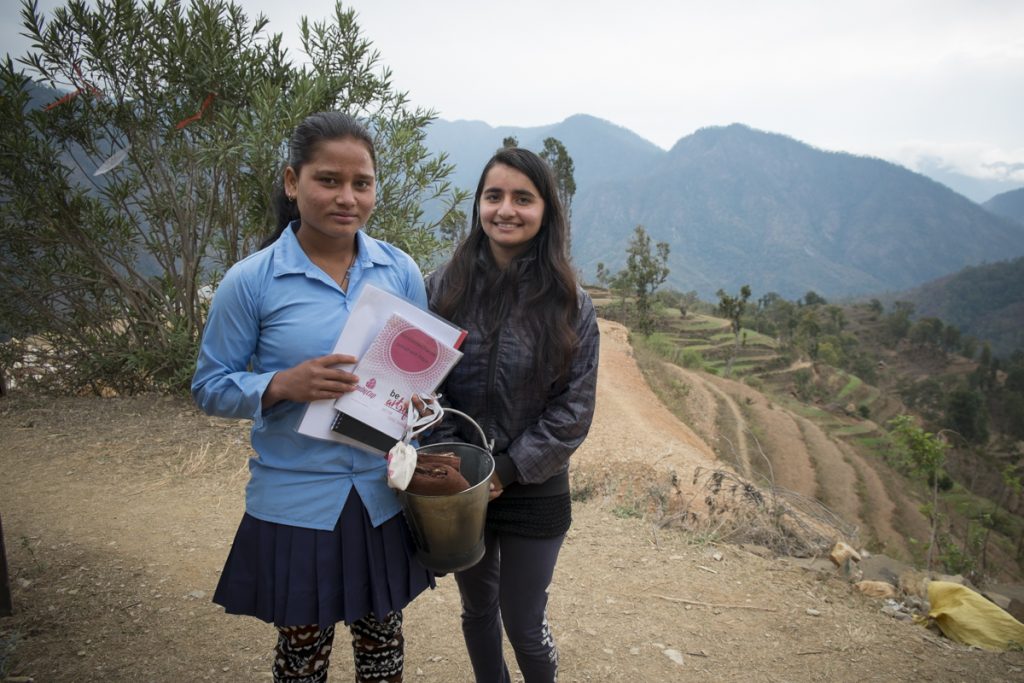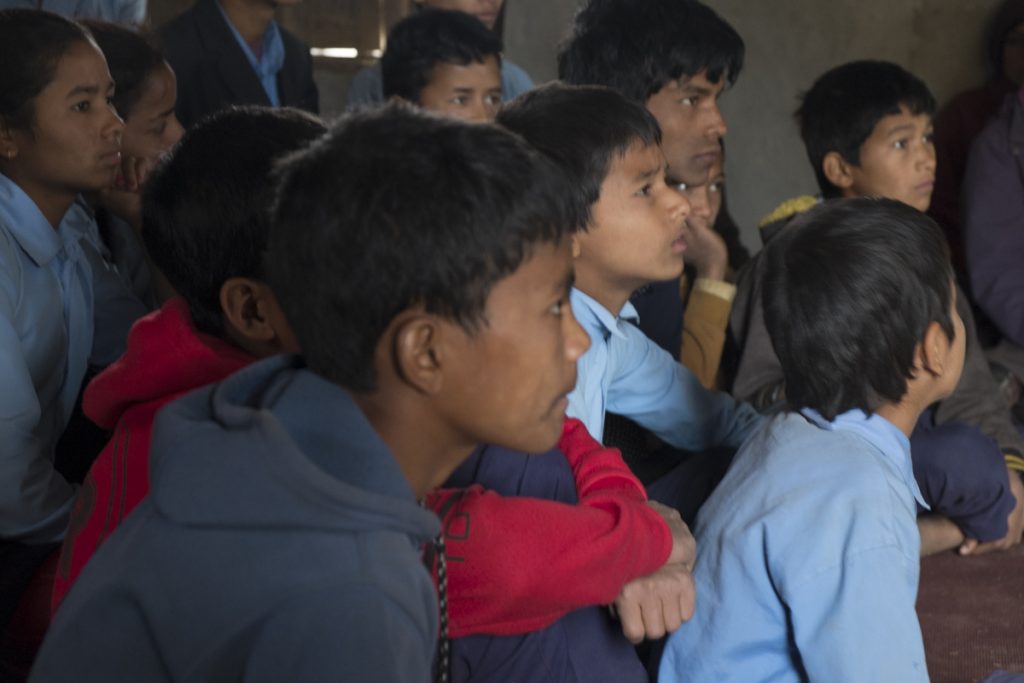Whenever one gets to a town in such remote areas – in spite of their beauty – the first thing coming to mind after seeing the life conditions waiting for us for the next few days is: I would go away right now.
Basti was no different.
Despite being aware such hard conditions were awaiting, the first moments were of total panic anyway. A big bed for the 5 women and a bed for the man. A dirty place for Western standards. Not enough blankets, or mattresses, or anything we were promised would be there. But this is Nepal and they can’t say no and you can’t complain. They give you (sell you) whatever they have. We made do with 4 people in one room and 2 in the other one (fortunately, I had advised the Spanish nurses to bring their sleeping bag and mat).
The following day (March 2nd) we went to the school and decided we were starting the workshops right then: the 2 Spanish nurses and one of the Nepalese nurses started with grade 9.
The other nurse (Susmila), the Nepalese project manager (Kamal) and I (Clara) met with the local nurse and health centre staff in order to get to know them personally and ask for help to gather the various women’s groups present in the VCD (municipality).
In the afternoon we held the first Ruby Cup Training with 2 teachers and one nurse, who will be in charge of monitoring and following up on the girls using the cups. They all think it’s an excellent solution.
One of the teachers told us that, when younger, she didn’t practice Chhaupadi but felt forced to follow the tradition when she got married. First surprise! We thought nobody amongst teachers and educated people would follow the tradition.
After that, we met with the chairwomen of the women’s groups and health volunteers, and arranged an appointment for the following day at 3 pm.
The day after that (March 3rd), the girls were off school. A mourning day had been declared due to a girl dying after not getting over a cancer treatment, but they all went to school anyway to hold a minute of silence for the late girl.
At 10 am women started getting to school unexpectedly. Since some of the VCDs were more than 3 hours away, they decided 3pm was not suitable and they got there earlier. This is Nepal! 🙂 They told us that, instead of attending the workshop with the girls at 3pm, they would rather do it at 7:30am. Once over initial panic, we ended up doing the introductory workshop on menstrual hygiene, explained the photography workshop and gave them 5 cameras to take pictures of what they did not like when they were menstruating – or what they would change. At no point did we mention the word Chhaupadi.
Shortly after the women left, the girls turned up to school. Since many of them came from Basti 3 – which is 3 hours away – they asked we held the lesson right then so they could go home. (K garne?). We also held #RatoBaltin’s Photo Project first session with the girls. We explained the 4 basic rules of photography and the Photovoice method, and invited them to take 5 cameras with them to take pictures of what they would like to change when they menstruate.
March 4th was a Saturday, the day Nepalese children don’t go to school. We spent it walking around town and unsuccessfully trying to get an internet connection. We planned the lessons for the week and rested.
March 5th, 8:30 am (we had been waiting for them since 7:30 – Nepalese time): 65 women in class, we got tea and biscuits for everyone, they had come a long way to listen to us.
We started the MHM (menstrual hygiene management) lesson with a rather physiological lesson. What is menstruation? How does it happen? and so on. We showed an amazing video called Monthlies, where they were exposed to the different ways women around the world experience menstruation. Then, the big “surprise”: their pictures. Chhaupadi huts, foods they were banned from eating while menstruating, and their huge need to discuss it.
The two Spanish nurses (Alba Maria Campos and Alba Parrado ) together with Samita (our Nepalese nurse) were teaching sex ed up until 3pm in grade 8.
At 3pm, the girls in secondary school came to our classroom: brief explanation on menstrual physiology, introduction to the menstrual cup, the Monthlies video, and watching and listening to their explanations of the pictures they took. Same as with the women’s group: Chhaupadi and a huge willingness to talk about it and understand related issues.
March 6th: 7:30 am: we got them to be on time. 🙂 Menstrual hygiene, how women around the world deal with the issue, Menstrupedia’s video in English with Hindi subtitles (we have not been able to finish the audio recording in Nepalese, it takes a long time and studios charge NPR8,000 to do it and our budget is not enough). Our project manager, Kamal, is doing it voluntarily whenever he has time (which is not often). We had a look and analysed the pictures they brought to us.
The nurses went on with sex ed to children of 6th and 7th grade and at 3pm we continued with the girls at secondary school. We already asked how many girls want to try the menstrual cup in order to know whether we can offer cups to non-schooled girls who attend with the women’s group.
March 7th: 7:30 am. We continued with menstrual hygiene and a first introduction to the menstrual cup. We had 7 cups available for young girls who are not schooled. We showed them a video on the importance of men supporting and helping with menstrual hygiene and kept checking out the pictures they brought us. Some of the results were striking. This was the last day we had lessons with the women. At the end of the lesson, the leaders of different groups wanted to talk to everyone else: they all invited the rest to change things. There is a monster in town called society, who forces them to practise Chhaupadi. Women are a majority in said society, so they are the ones who can kill the monster. 🙂
The nurses taught boys and girls of grades 6 and 7 together.
At 3pm we held the first cup training for girls and ended by boiling and sterilising all the cups. We wanted to make sure they understood exactly what they had to do. We also asked them that, at home, they tried to insert the cup even if they were not menstruating. We have been really insistent on the importance of washing hands with soap before inserting the cup, using the bucket to get clean water to wash their Menstrual Cups – as long as it comes straight from the fountain’s tap or the water is previously boiled (in Nepal they usually boil drinking water, they only need a glass to rinse the cup when they change it) – and boiling the cup for at least 5 minutes after and, if possible, before its use. This is an area where red dust gets stuck everywhere, and these recommendations are to make sure they don’t get infections.
March 8th: Kamal and I already told about the impressive day we had from there, you can read about it here
Before the above, we had been strolling around the nearest towns. Together with the girls who had taken the original pictures with digital cameras, we took the pictures again with the Instax Wide that Fuji had donated to us for the project. People were amazed that they could have the pictures in their hands instantly. We could not resist gifting their pictures to some of the families who had been helping us. Such is the magic of photography! 🙂 However, even though Fuji donated 60 pictures and we bought 20 more, we are afraid that we will run out of photographic paper before we finish the project. Buying more paper in Nepal will be, we think, mission impossible.
March 9th: Ruby Cup training with the girls and women who had not been able to attend the previous day, and Q&A round with the rest.
March 10th: At 10am opening of the exhibition; there was a slideshow of the pictures that girls and women had taken a all day long; and finally, we projected a Nepalese film to secondary school boys and girls. It deals with Chhaupadi, its consequences, its introduction in Achcham, the attempts at demolishing the huts, and what is done in the rest of the country when women menstruate. Teachers, boys and girls listened to the film intently and sternly. They all were adamant that things had to change during the talk that followed the film. 🙂
We hope so!
We said farewell to all the students and thanked them for their help. We then met the teachers (men and women) and offered them a Ruby Cup training – which they had asked for – so they know how to help the girls.
At night a group of girls came to tell us about their experience with the cup, and the older girls (16yo) committed to help the 2 youngest ones (12yo), as well as to keep in touch with us via phone (we are still in touch).
The following day we left this amazing town, which stole the hearts of everyone in the expedition, looking forward to September to come back again to check on the girls.
Let’s go for the 3-hour uphill trek towards Kunti Bandali! Piece of cake!
Please remember we still need your help to raise funds to continue with our project. You can donate at: https://www.migranodearena.org/en/challenge/13821/rato-baltin-nepal—facing-chhaupadi-with-menstrual-education/
Written by Clara Go - Translate to english by Alba Miquel - Photos ©: Clara Go

